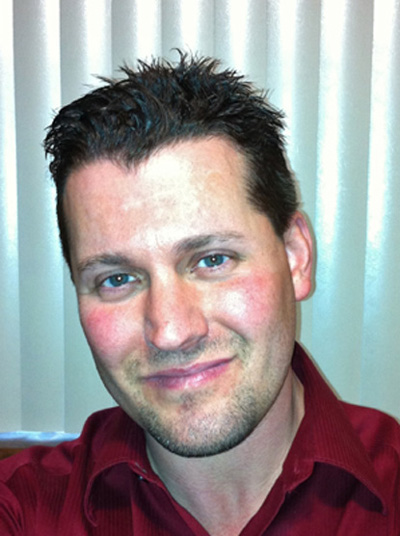
| May 2012 | Past Issues | Printer-Friendly | Advertise | Affiliates Search | Find a Pest Control Operator | PCOC.org |
|
EVP NOTES
Every year the California pest control industry gathers together in what is the largest annual convention and trade show for our industry in the country, outside of NPMA's PestWorld. This year, we have completely changed the program...and even the name – to reflect INCREASED VALUE AND A NEW FORMAT. Expo 2012 is June 21-23 at the Catamaran Resort in San Diego. Our new Expo program is designed to provide interesting and informative speakers, an exhibit hall where PCOs can learn about new products, and also to provide a total of nine hours of breakout sessions! We have negotiated discount prices to San Diego area attractions, which you can't get anywhere else! This year's golf tournament is on the Riverwalk Golf course and is being sponsored by the San Diego District. Our keynote speaker this year will be terrific: Lloyd Smigel. Lloyd has been in pest control for more than 30 years and was certified in Arizona and Texas and licensed in California for pest, termite and fumigation. He was a partner in a Tampa company where sales went from $220K to more than $1M in six years, and at another company in Texas that went from $800K to more than $1.5M in four years. Since 1988, Lloyd has consulted for pest control companies across the U.S., he has taught many sales courses and has helped develop corporate strategies for many small private companies. One of the most important functions of this premier event is in the networking that takes place among the attendees: PCOC companies, manufacturers and suppliers. Several manufacturers and suppliers, for instance, take this time to roll out new products because of the high value placed on the Exhibit Hall. The Installation Banquet is a time when we can all be proud of our association: celebrating the dedication and commitment of individuals who provide the leadership in PCOC and by the same token, celebrating what PCOC is all about: our members. The Early Bird Registration deadline has been extended to May 21, the same deadline as our room block cut off. After May 21 the price of rooms at the Catamaran Resort will increase. Act Today. Reserve your room by clicking here. I look forward to seeing you all in San Diego!
From the Desk of Bill Douglas, Interim Executive Officer, SPCB ALERT - POTENTIAL LICENSE DENIAL OR SUSPENSION FOR FAILURE TO PAY TAXES Effective July 1, 2012, the Structural Pest Control Board is required to deny an application for licensure or suspend a license/certificate/registration if a licensee or applicant has outstanding tax obligations due to the Franchise Tax Board (FTB) or the State Board of Equalization (BOE) and appears on either the FTB or BOE's certified lists of top 500 tax delinquencies over $100,000. (AB 1424, Perea, Chapter 455, Statutes of 2011) Once it has been determined that an applicant or a licensee is on a certified list, the applicant or licensee has 90 days from the issuance of a "Preliminary Notice of the Intent to Suspend or Withhold Issuance or Renewal of the License" to either satisfy all outstanding tax obligations or enter into a payment installment program with the FTB or BOE. Any such person who fails to come into compliance will have his/her license denied or suspended until the Structural Pest Control Board receives a release from the FTB or BOE. The form for requesting a release will be included with the preliminary notice of suspension or denial. The law prohibits the Structural Pest Control Board from refunding any money paid for the issuance or renewal of a license where the license is denied or suspended as required by AB 1424 for failure to pay taxes. The FTB and BOE are currently expanding the certified lists from 250 to 500, but you can check if you are currently on the FTB's certified list or the BOE's certified list. If you believe you are on either list in error, please call the FTB at (866) 418-3702 or the BOE at 916-445-5167. LEGISLATIVE UPDATE
IN THE NEWS
 SUBTERRANEAN TERMITES: INDIVIDUALS AND THE COLONY SUBTERRANEAN TERMITES: INDIVIDUALS AND THE COLONY By Josh Adams, Director of Membership & Technical Services
In regard to subterranean termites, pest management professionals often only concern themselves with the termite colony as a whole. PMPs usually don't consider the behavior of individual termites within the colony. Jeff Whitman, a Master's student at UGA, videographed and scored worker termite behavior. He found that the entire range of worker actions fell into four basic categories: 1) walking and resting, 2) grooming, 3) eating and 4) excavating. Aside from walking and resting, individual termites spent most of their time grooming other termites. Termite workers will clean their own antennae but depend on their nest mates for overall body cleanliness. Jeff recorded workers chewing and swallowing five things: 1) cellulose they picked up themselves, 2) something picked up while grooming another termite, 3) regurgitation, 4) something requested from another termite's mouth and 5) something requested from another termite's rear end. In studying individual termites, Jeff found no consistency or pattern in the type of food acquisition of each termite. One termite might not eat for 24 hours, a second might have 10 meals from another termite's mouth and three from another's rear end, while a third might have 20 meals of cellulose debris it picked up for itself and two each from the mouth and rear end of a fellow termite. However, when Jeff combined the data from 36 termites, he found a one-third split between the three different types of food acquisition schemes for the colony. The apparent inconsistency in feed habits of individuals developed a pattern when compared in a colony setting. He also found, when he examined the time spent in each of the four basic activities, that the average worker does nothing – walking and resting – for 80 percent of the day, but if he took into account the entire colony as a whole, at any given time, a portion of the colony was always doing something. One may ask, how can an insect that spends about 80 percent of its time doing nothing cause so much damage? Because a colony has enough members to always have some members feeding on cellulose in structures. THE EPA PYRETHROID LABEL CHANGE
By Josh Adams, Director of Membership & Technical Services
Recently, I have received many phone calls concerning the EPA's 2009 pyrethroid labeling initiative. Copies can be found here. Back in late 2011, Chuck Andrews from the Department of Pesticide Regulation sent a letter to the EPA wanting clarification on a few issues concerning language in the label. The EPA responded in October 2011. This letter is now posted in PDF form. The copy of this letter has the questions DPR posed and the EPA's response to each question. Hopefully, this letter will help clarify misunderstandings some of our members might have. For further questions call Dave Braness from Bayer at (408) 205-8917. Dave has been going around the state educating pest control operators about the label changes.
CERTIFIED AS A BED BUG EXPERT
By Gail Getty
Being recognized as an expert in the field of bed bug management is critical for you and your company's ongoing success, and now you can be certified in the pest management industry. PCOC is proud to support Domus Institute, an independent scientific organization developed by Gail Getty. Domus Institute's Professional Certification Program is a program designed to educate and train individuals in bed bug identification and eradication using industry standards and best practices. For more information on this certification program, click here. Domus Institute is holding a one-day training program for certification in Southern California on June 5th. Domus Institute is partnering with experts in research entomology, pathology, statistical algorithms and consumer insights and behaviors. Speakers include Gail Getty and Sylvia Kenmuir. Cost of the program is $445 for PCOC members and $545 for non-PCOC members. Space is limited. For more information and a brochure please contact Gail at: gmg@DomusInstitute.com. 2012 PCOC FUMIGATION BANNER BONANZA Contest runs from March 1 through May 31, 2012. Click here for contest rules.
This is your last opportunity to have your name on the printed ballot if you wish to run for election. You need to submit you name to Lee Whitmore by Friday, May 25th. Send Lee an email: lee@benexfume.com. The following positions are up for election: Executive Committee: President President-Elect Treasurer 2nd Vice President 3rd Vice President Peacock Directors: Three positions PAPCO Trustees: One position PCOC Scholarship Foundation: Two positions PCOC Cares Foundation: Three positions
RICHFIELD, Ohio — PCT has launched its annual Technician of the Year awards program. The awards, sponsored by BASF Pest Control Solutions, recognize a trio of standout service professionals in the residential, commercial and termite categories. Be sure to nominate your company's standout service professionals. The nomination form is printed on pages 127-128 in the April issue. A PDF of the nomination form can be downloaded here. You also can fill out the online nomination form here. For additional information about the program, contact Brad Harbison via email at bharbison@gie.net or by phone at (330) 523-5323. Entry deadline is July 13, 2012. UPCOMING EVENTS
2012
June 1-2
Leadership Academy
Silverado Resort
Napa, CA
June 21-23 PCOC Expo 2012
Catamaran Resort
San Diego, CA
Sept. 28-29
Board of Directors Meeting
Hyatt Regency
Monterey, CA
Oct. 2
18th Annual Tri-District Golf Tournament
Benefiting PAPCO
Coyote Hills Golf Course
Fullerton, CA
Dec. 7-8
Board of Directors Meeting
Hilton Palm Springs
Palm Springs, CA
MEMBER VALUE PROGRAM
PCOC MONTHLY INSURANCE/SAFETY TIP
You might think your company has an effective hazard prevention and safety training program. But how effective is it if your workers don't understand it?
According to the most recent census figures, approximately 12 percent of the population is foreign-born; many of these are less than proficient English speakers. As minority groups grow as a percentage of the population, employers will face new challenges in making their workplaces safe for all employees. To determine if your safety communications are effective, evaluate the following factors:
To improve the effectiveness of your safety communication program, consider taking any of the following steps that may be appropriate for your company.
For more information, please contact the PCOC Insurance Program department of Jenkins Insurance Services at (877) 860-7378. NEW MEMBERS
FREQUENTLY REQUESTED INFORMATION
TEMPORARY NPMA LOGIN FOR JOINT MEMBERSHIP LOGIN: 313501 PASSWORD: PCOC PCOC website password for 2011-2012 effective July 1, 2011:"npma" Department of Fish & Game Department of Food & Agriculture Department of Pesticide Regulation Find Your Legislator Healthy Schools Act Structural Pest Control Board |
Pest Control Operators of California |
 |





